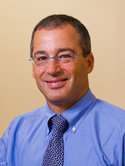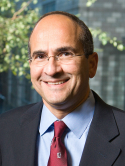Evaluation of a combined calcium sodium alginate and bio-occlusive membrane dressing in the management of split-thickness skin graft donor sites Journal Article
| Authors: | Disa, J. J.; Alizadeh, K.; Smith, J. W.; Hu, Q. Y.; Cordeiro, P. G. |
| Article Title: | Evaluation of a combined calcium sodium alginate and bio-occlusive membrane dressing in the management of split-thickness skin graft donor sites |
| Abstract: | The optimal treatment of the split-thickness skin graft (STSG) donor site remains an unresolved issue. This study was conducted to evaluate the combined use of calcium sodium alginate and a bio-occlusive membrane dressing in the management of STSG donor sites. This study was a prospective evaluation of all patients requiring an STSG over a 6-month period ending October 1998. There were 57 patients with a mean age of 61 years. All skin grafts were harvested with an electric dermatome from the anterior thigh and were 0.012 to 0.016 inches thick. Donor sites were dressed with calcium sodium alginate followed by a bioocclusive dressing. Postoperatively, the skin graft donor site dressing was removed and replaced. The mean skin graft area was 114 cm2. The first dressing change occurred, on average, 3 days postoperatively. All dressings were taken down and the wounds reevaluated 7 days postoperatively. Fifty-two patients (91%) had achieved complete reepithelialization by this time. Five patients (9%) required an additional dressing. All wounds were healed completely by postoperative day 10. Donor site discomfort was minimal and limited to the time of dressing change. There were no wound-related complications. The average cost of dressing supplies was $48.00 per patient and $23.00 per dressing. This method of managing STSG donor sites allowed for unimpeded reepithelialization without wound complication. The bio-occlusive dressing eliminated the pain typically associated with fine mesh gauze dressings. The absorptive property of the calcium sodium alginate eliminated the problem of seroma formation and leakage seen routinely with the use of a bio-occlusive dressing alone. These results confirm that this technique is both efficacious and cost-effective. |
| Keywords: | adult; controlled study; human tissue; aged; aged, 80 and over; middle aged; major clinical study; donor site; wound dressing; prospective studies; protective clothing; pain; wound healing; wound; cost effectiveness analysis; health care cost; thigh; tissue and organ harvesting; epithelization; costs and cost analysis; skin transplantation; skinfold thickness; hemostatics; split thickness skin graft; humans; human; male; female; priority journal; article; calcium alginate; dermatome; alginates; glucuronic acid; hexuronic acids; occlusive dressings |
| Journal Title: | Annals of Plastic Surgery |
| Volume: | 46 |
| Issue: | 4 |
| ISSN: | 0148-7043 |
| Publisher: | Lippincott Williams & Wilkins |
| Date Published: | 2001-04-01 |
| Start Page: | 405 |
| End Page: | 408 |
| Language: | English |
| PUBMED: | 11324883 |
| PROVIDER: | scopus |
| DOI: | 10.1097/00000637-200104000-00009 |
| DOI/URL: | |
| Notes: | Export Date: 21 May 2015 -- Source: Scopus |
Altmetric
Citation Impact
BMJ Impact Analytics
Related MSK Work





